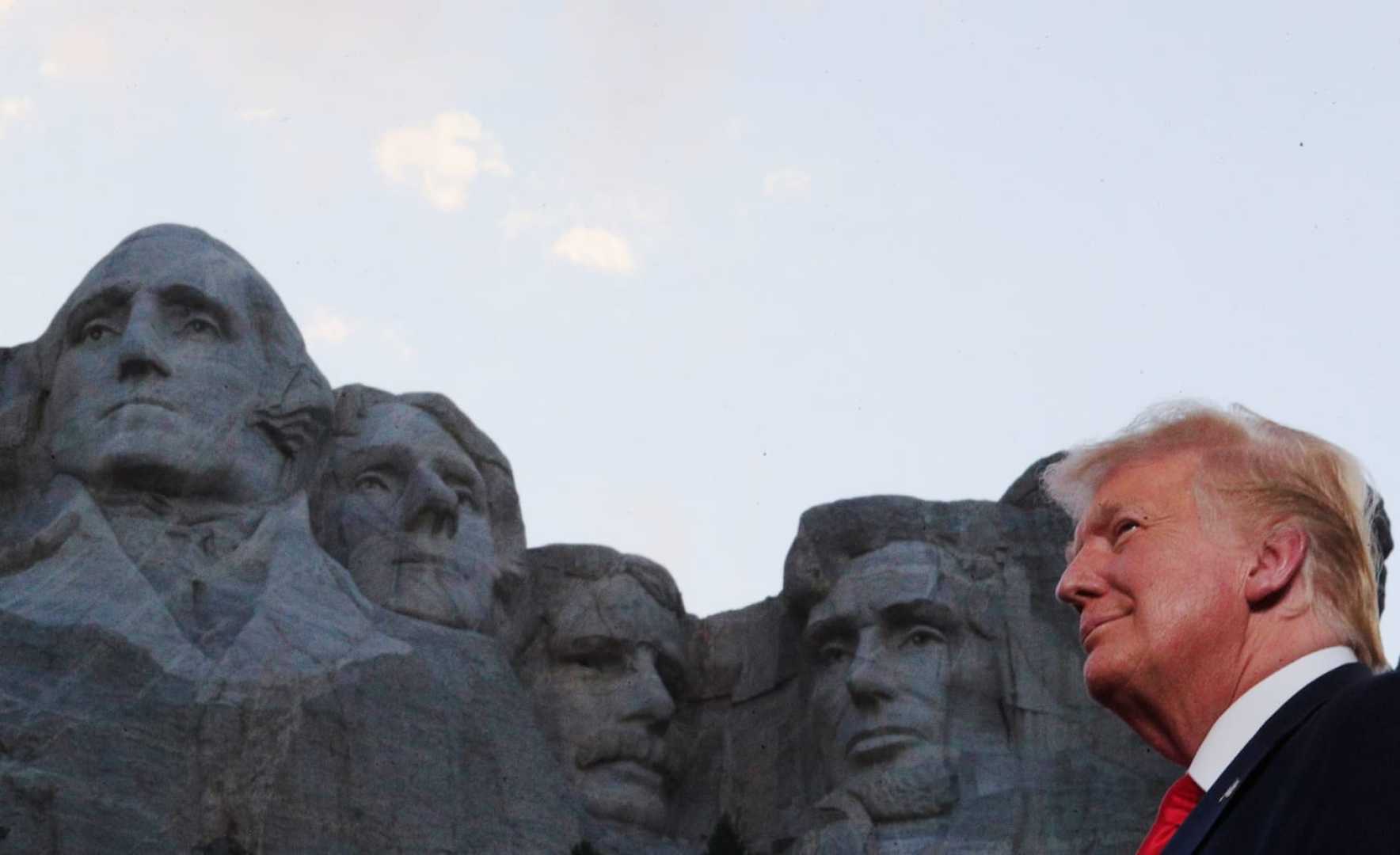Politics
Trump’s Quest for Mount Rushmore: Is His Face Possible?

KEYSTONE, S.D. — Former President Donald Trump has openly expressed his desire to join the illustrious roster of figures carved into Mount Rushmore, a monument that features George Washington, Thomas Jefferson, Theodore Roosevelt, and Abraham Lincoln. During his first term, Trump communicated his ‘dream’ to Kristi Noem, a South Dakota congresswoman, who later gifted him a model of the monument with his own likeness included.
The idea of adding Trump’s face to the granite faces has resurfaced since he returned to office. In January, Florida Congresswoman Anna Paulina Luna introduced legislation seeking to direct the Secretary of the Interior to consider the carving. This proposal was referred to the House Committee on Natural Resources, which has yet to take action on it.
In March, Interior Secretary Doug Burgum suggested in an interview that there is ‘definitely room’ for Trump’s face at Mount Rushmore. However, experts and officials with the National Park Service have pushed back against the notion, citing that Mount Rushmore is considered a completed work of art and that there is physically no viable space left for additional faces.
The debate has philosophical and geological dimensions; it raises questions of whether anyone should be added to an iconic landmark versus whether it’s even possible to carve new likenesses into the stone. The National Park Service confirmed, ‘The carved portion of Mount Rushmore has been thoroughly evaluated, and there are no viable locations left for additional carvings.’
Historically, Mount Rushmore was conceived by sculptor Gutzon Borglum, who selected the four presidents to symbolize the country’s first 150 years. Plans for further additions have often been dismissed, as Borglum’s vision specifically aimed to memorialize influential presidents rather than contemporary figures.
Opposition to altering the monument comes not only from historical perspectives but also from practical geological considerations. Experts warn that any new carving might jeopardize the integrity of the existing sculptures, given the complex fractures and veins within the granite.
Dan Wenk, former superintendent of the memorial, stated, ‘You wouldn’t add another face to Borglum’s Mount Rushmore just as you wouldn’t add to da Vinci’s “Last Supper.”’
The conversation may tide toward redirecting ambitions for Trump. He previously proposed a National Garden of American Heroes, a statue park honoring notable Americans, which could serve as a more feasible project. South Dakota’s governor is advocating for the sculpture garden to be located near Mount Rushmore. The impetus remains to preserve and honor America’s historical figures while ensuring that current projects respect the integrity of existing monuments and landscapes.












